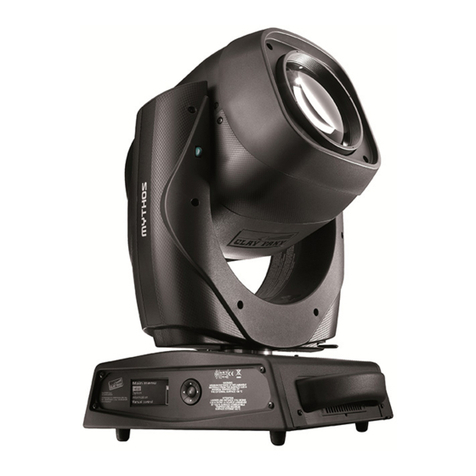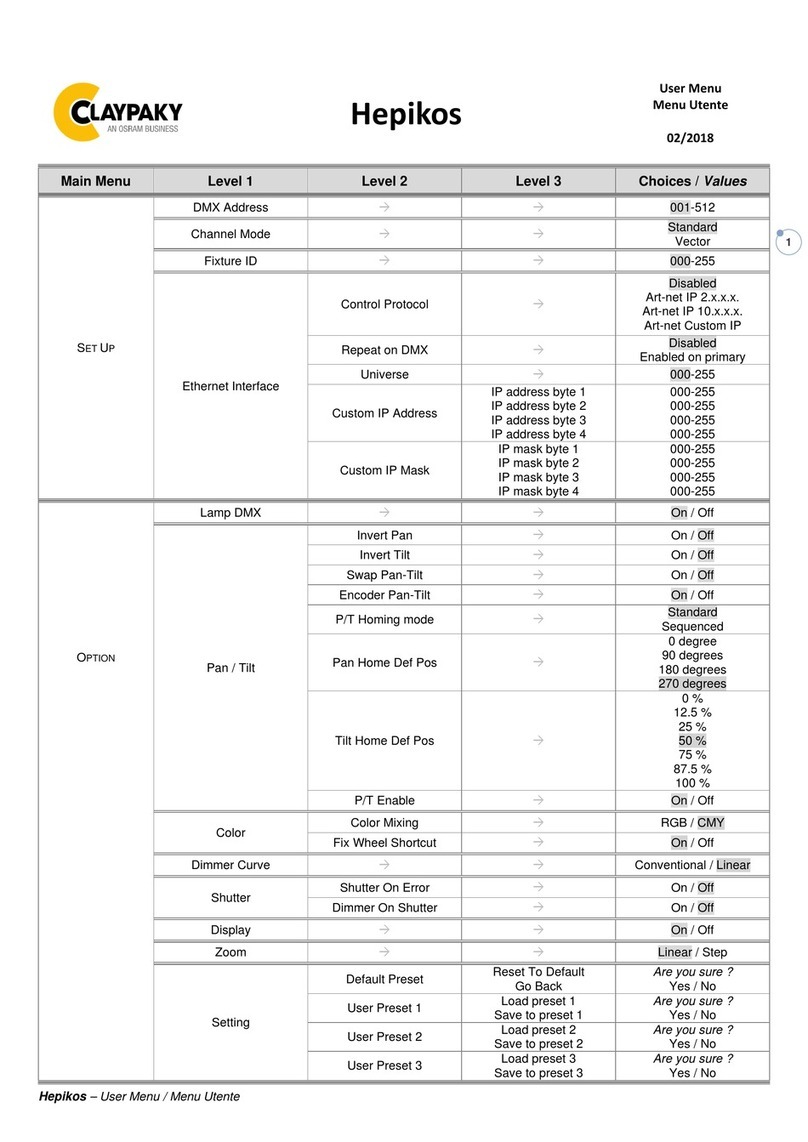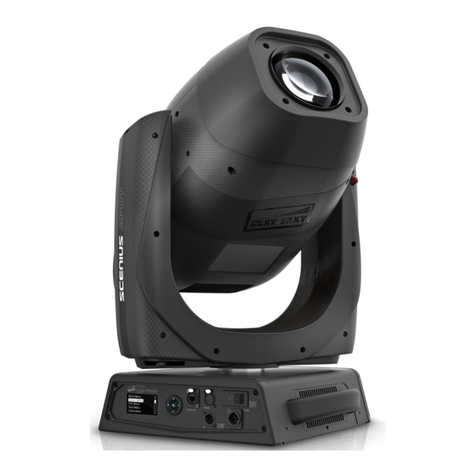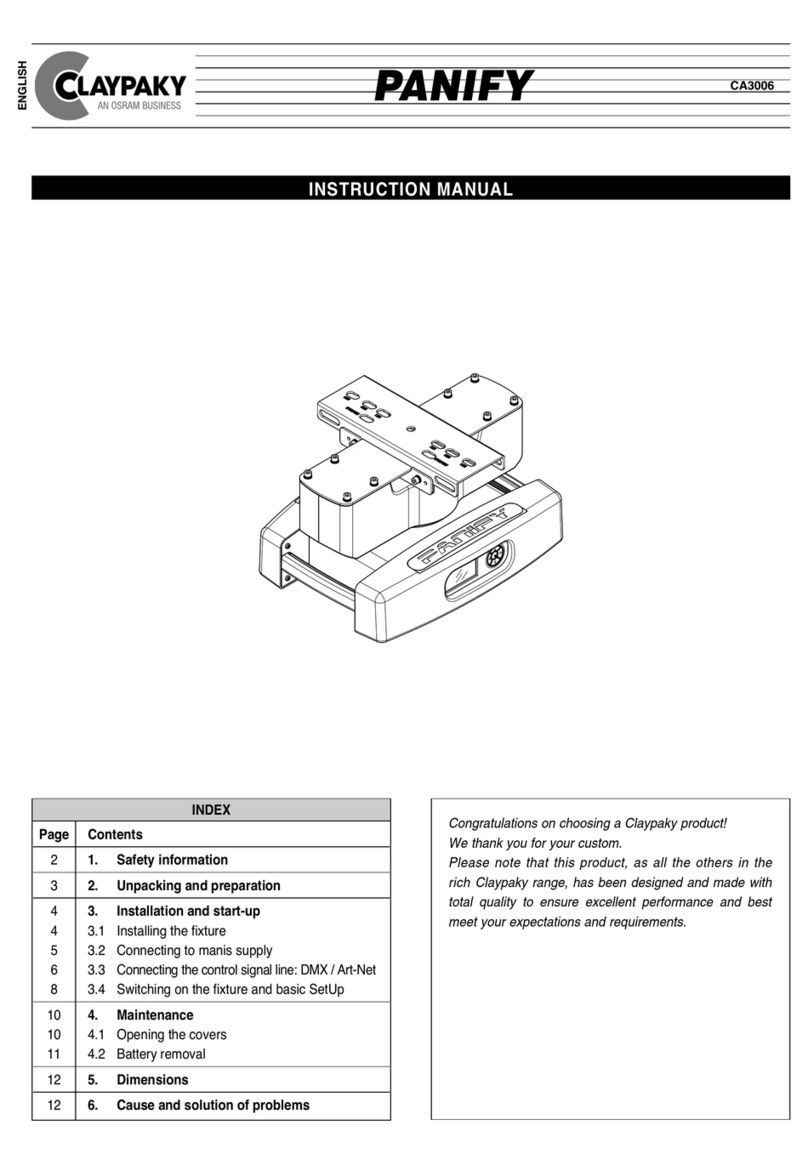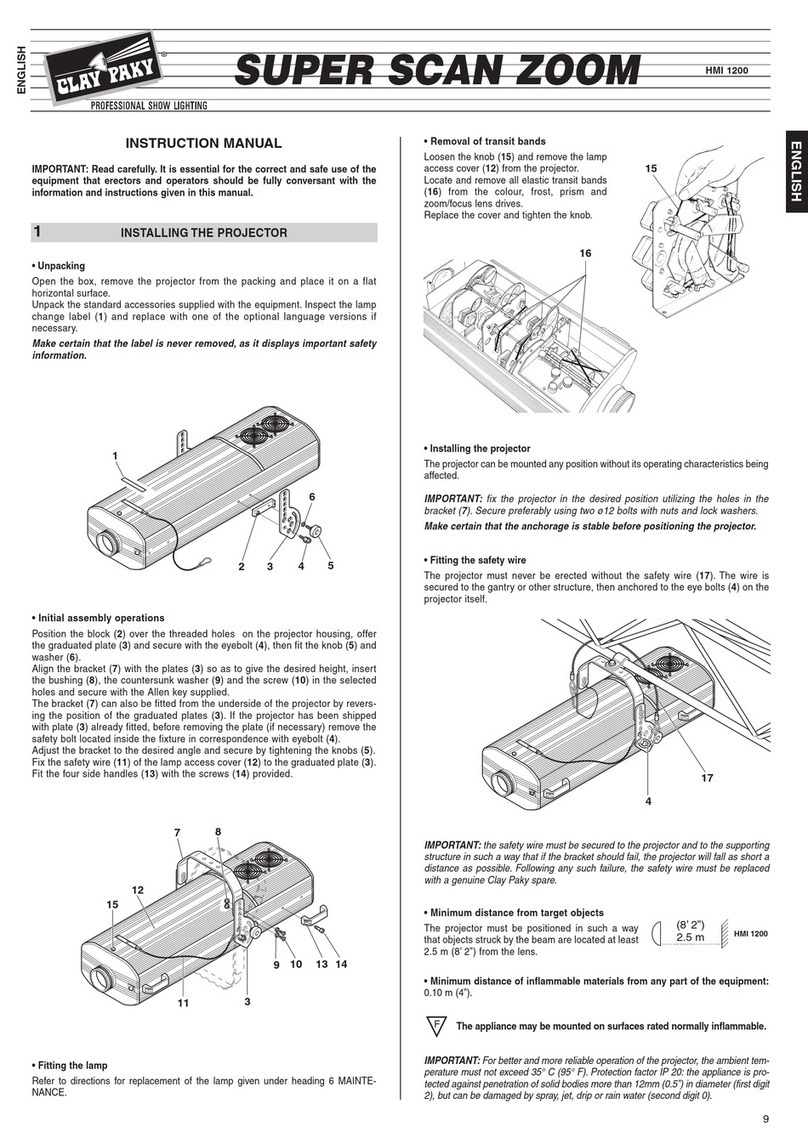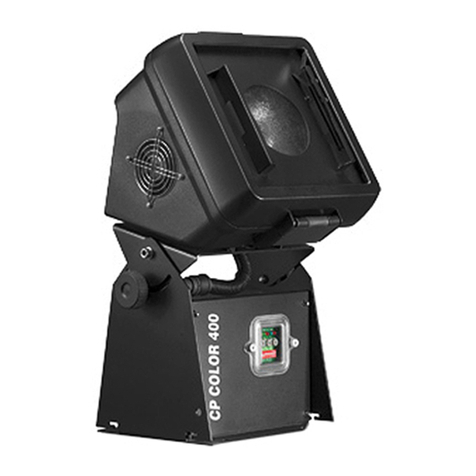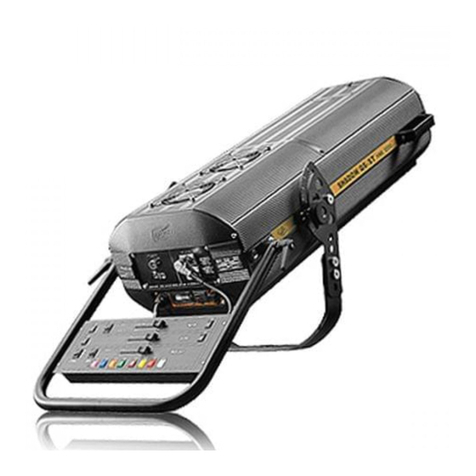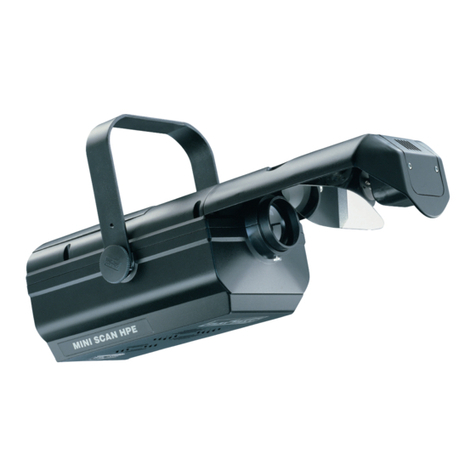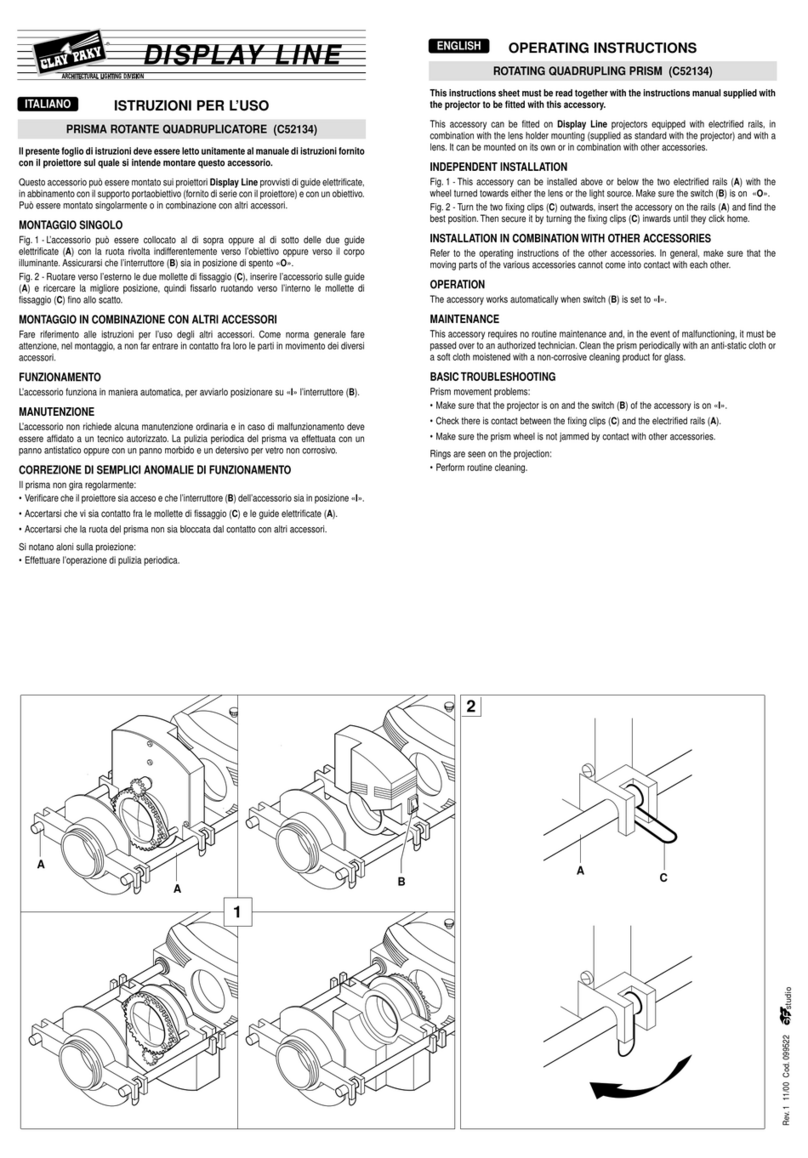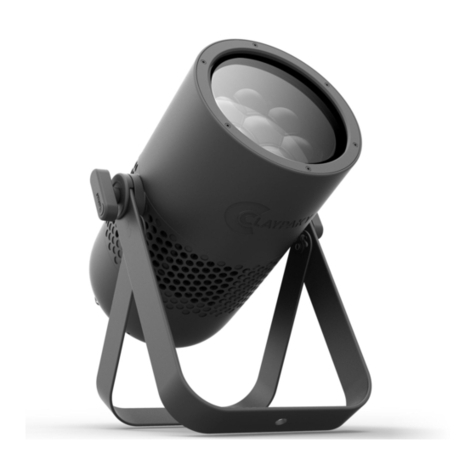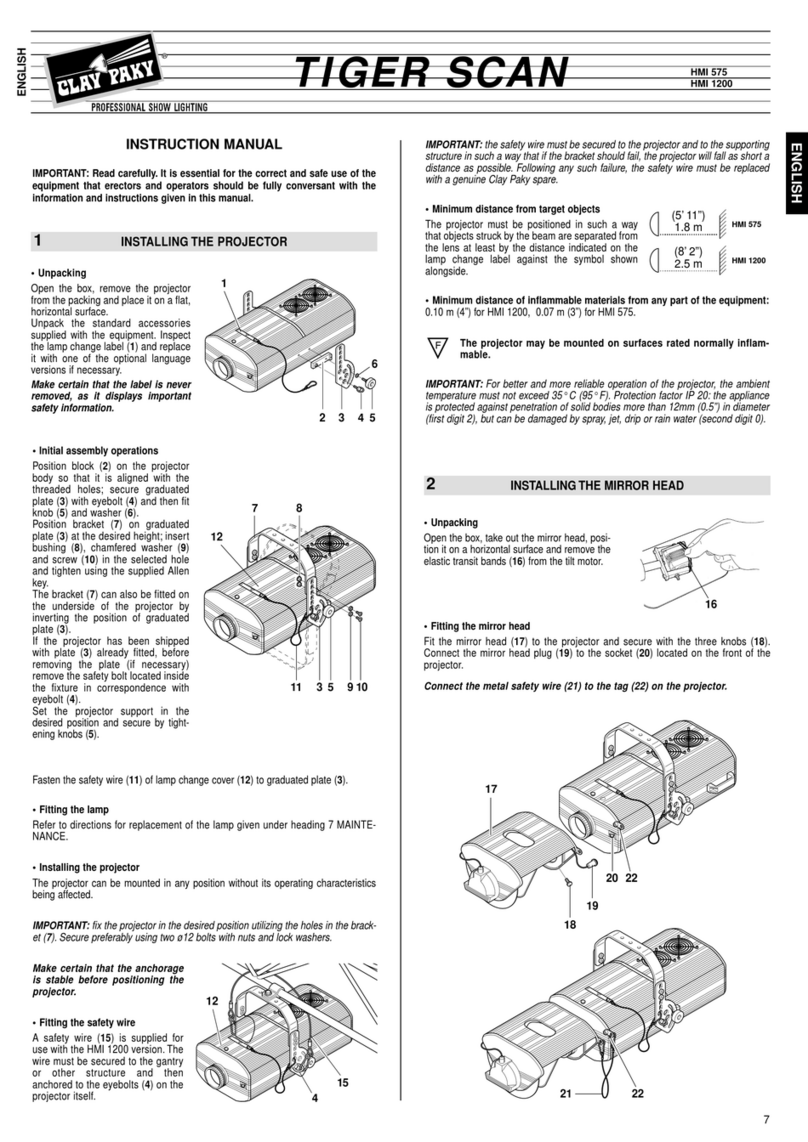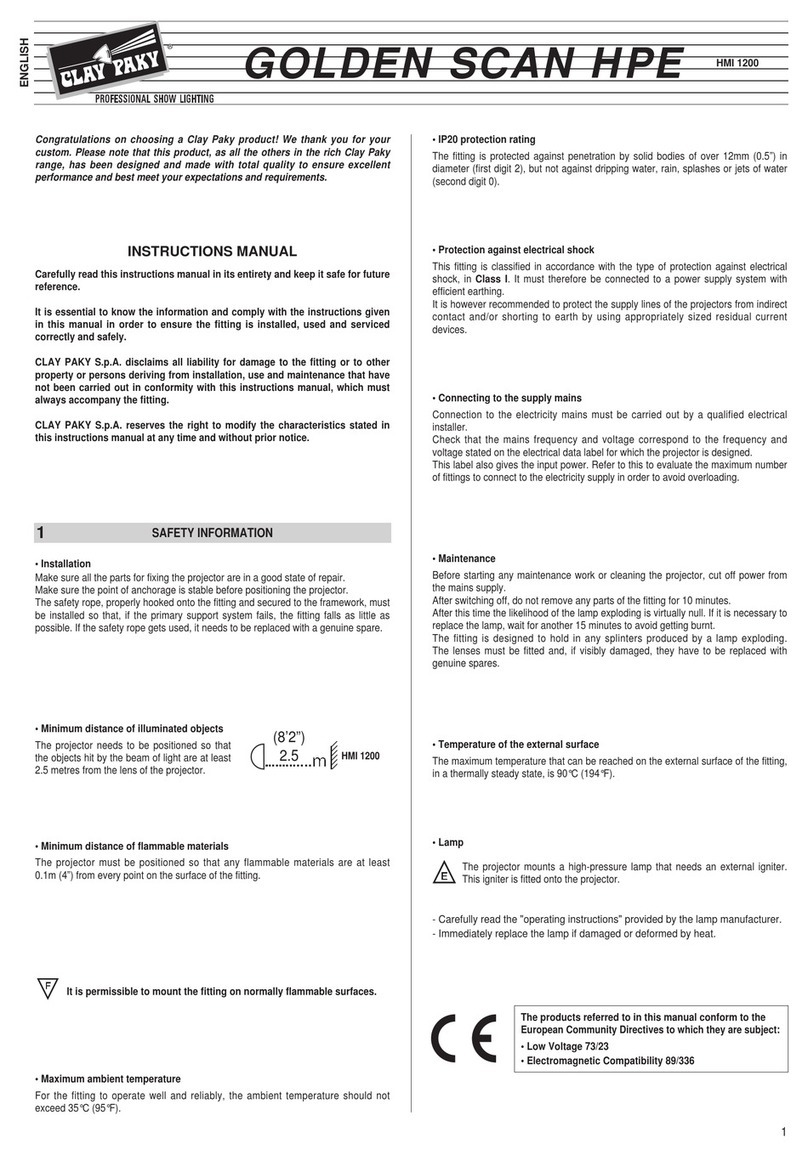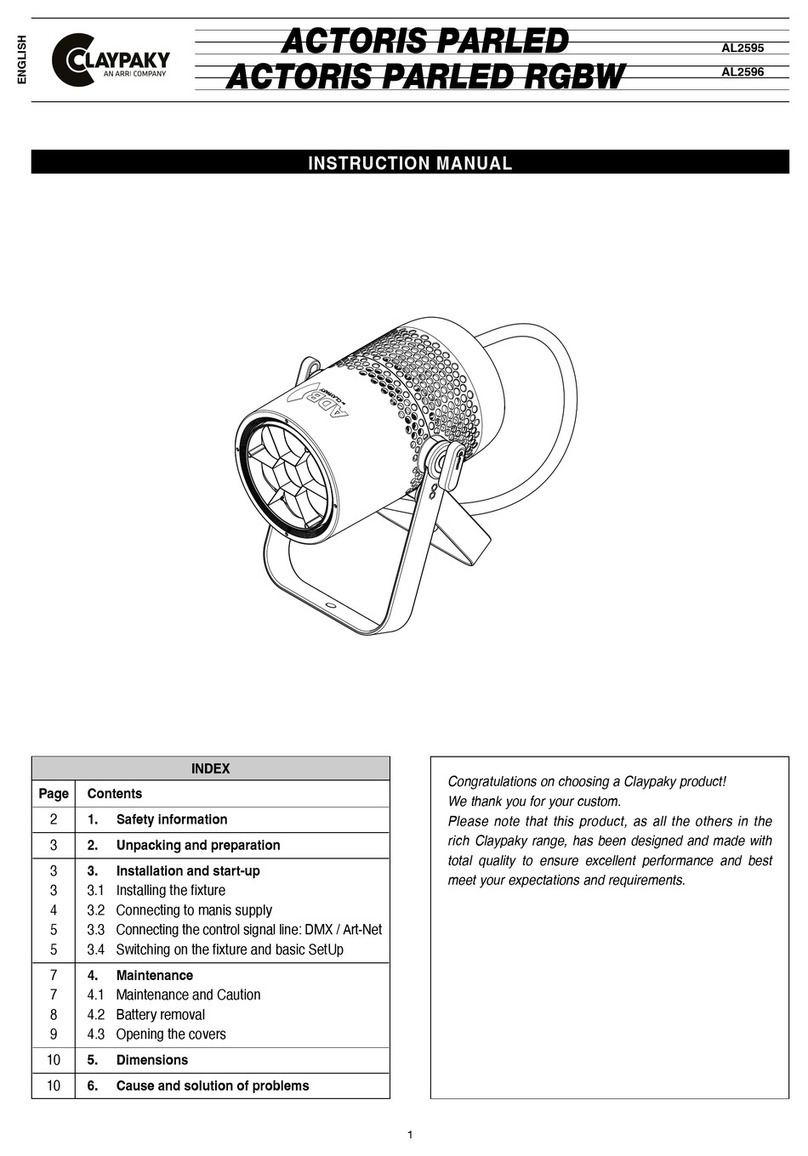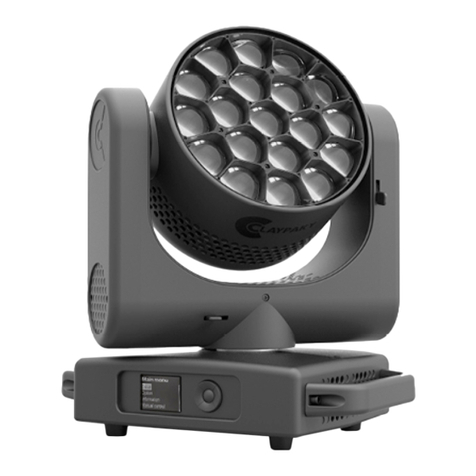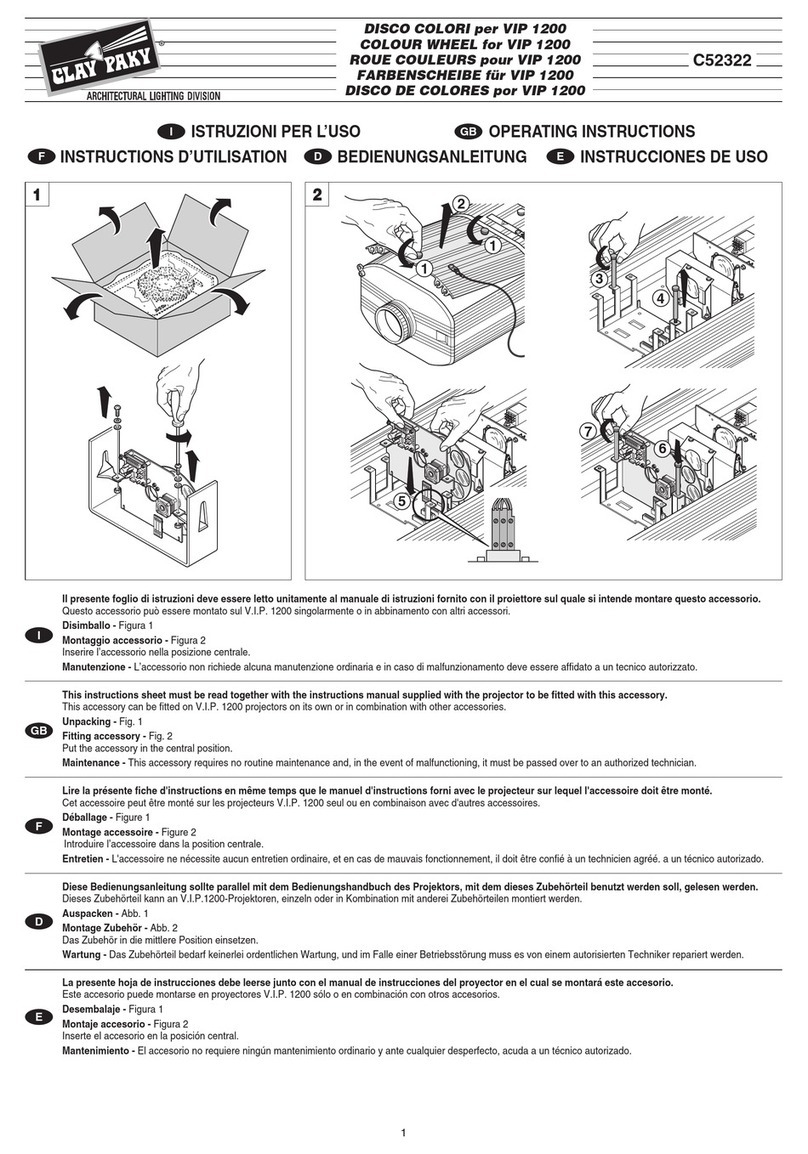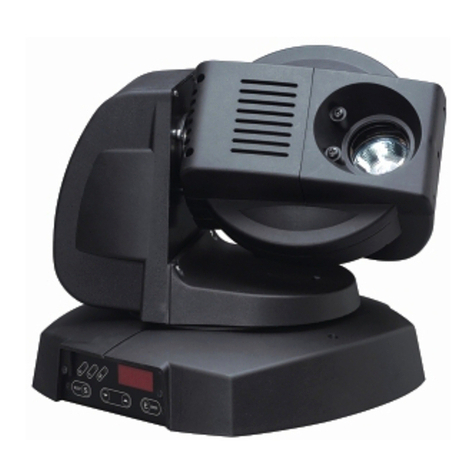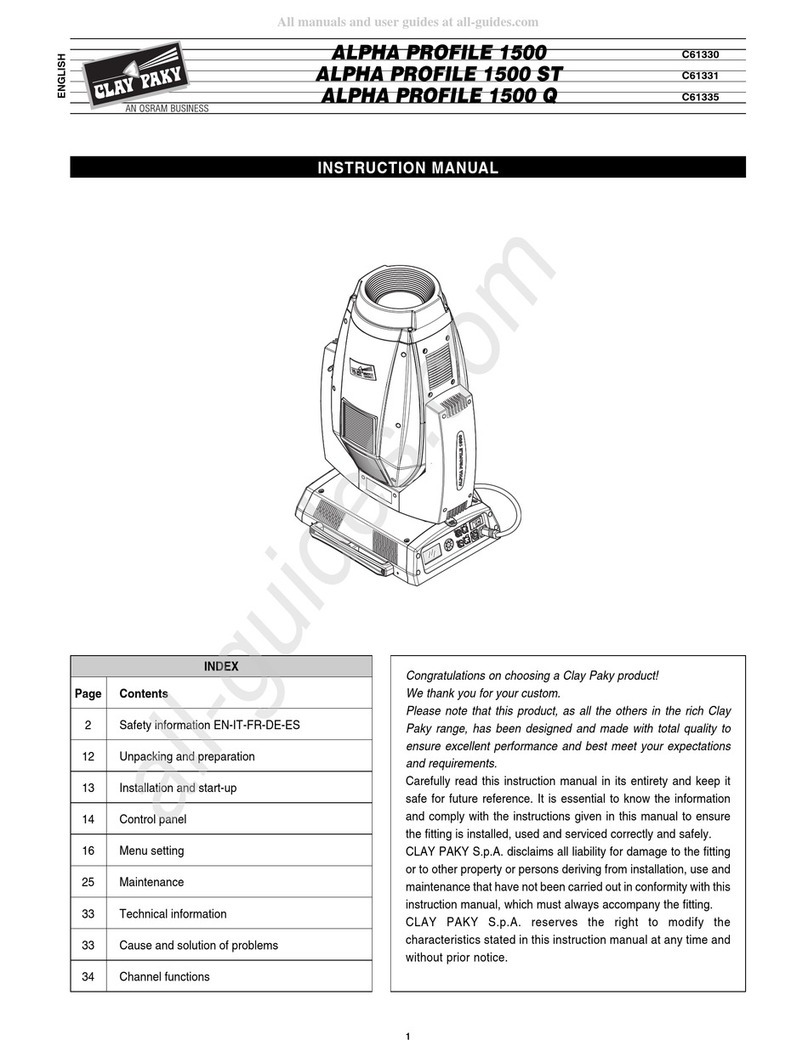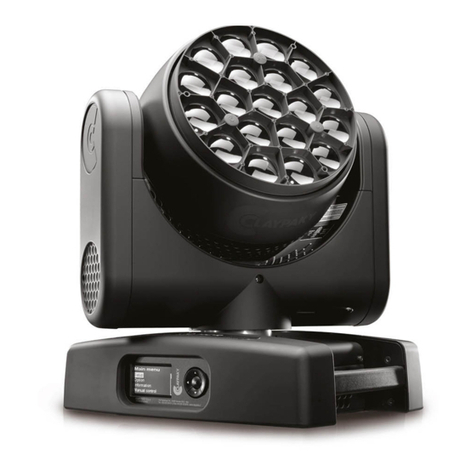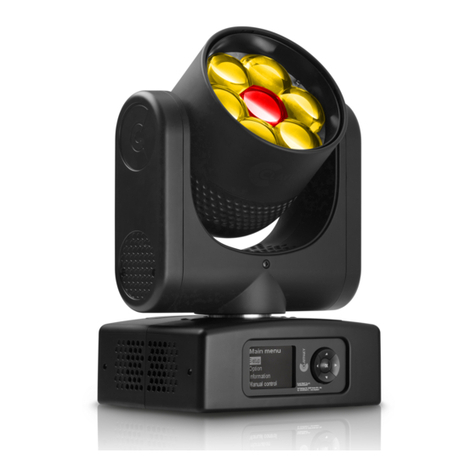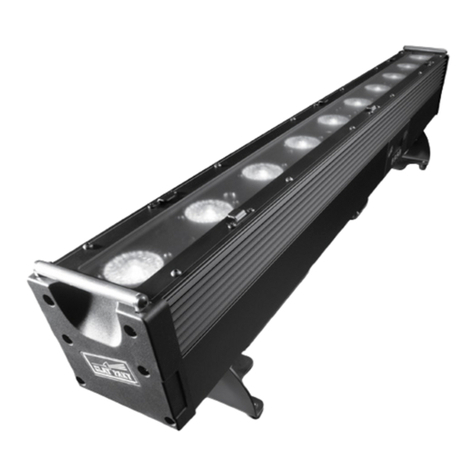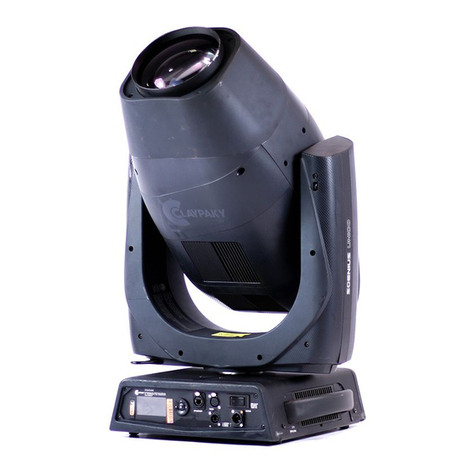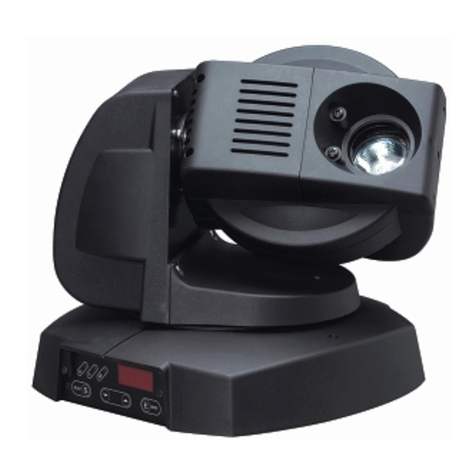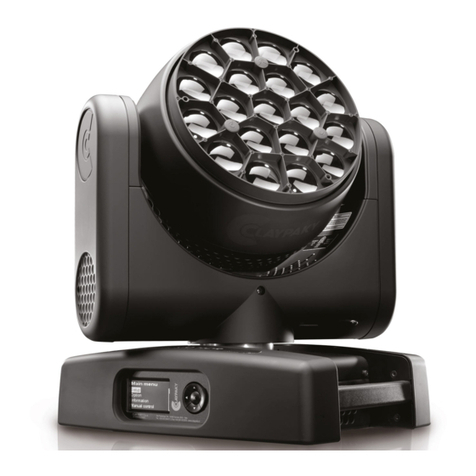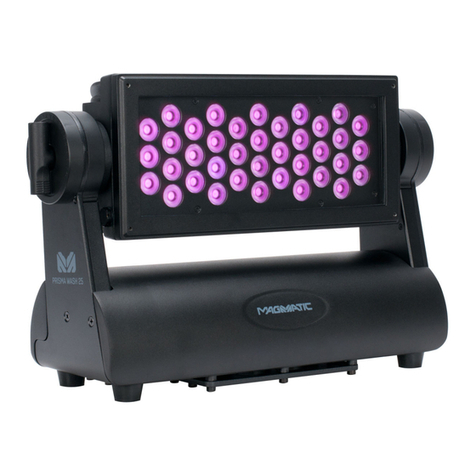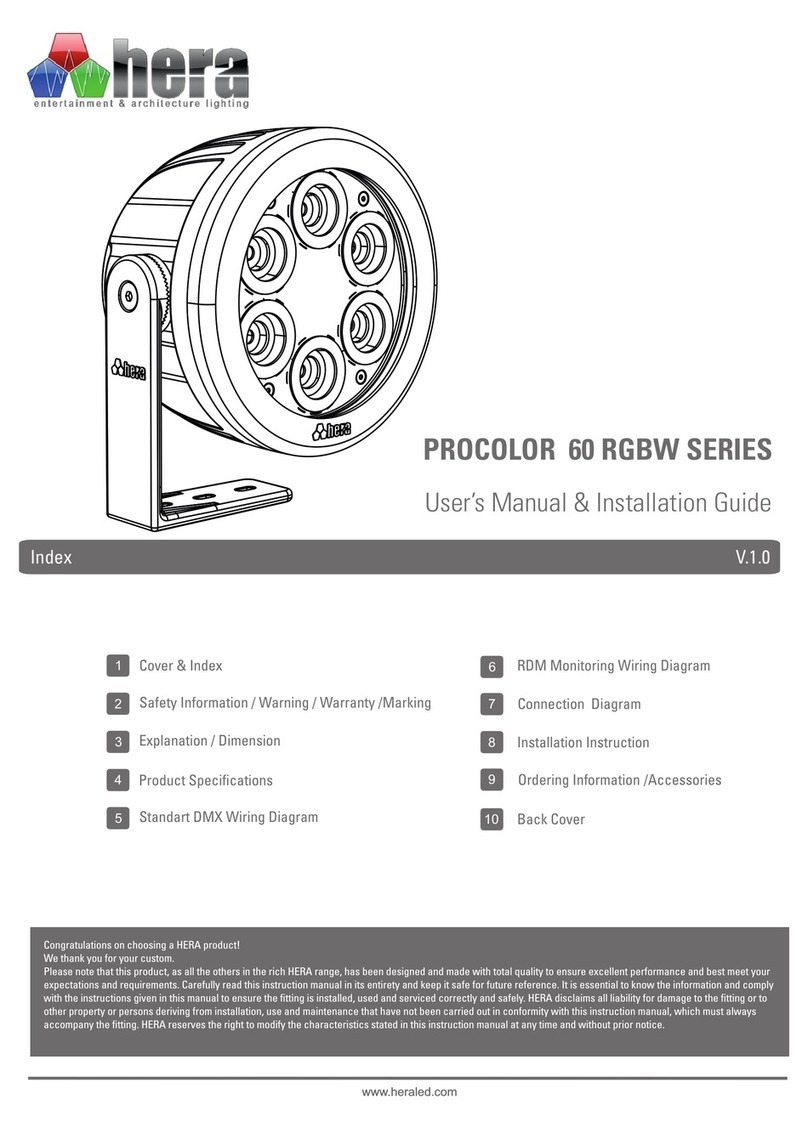7
TECHNICAL DATA
CONSTRUCTION FEATURES
Safety devices
•
Power supply shuts off automati-
cally in the event of overheating or
cooling system failure.
•
Power shuts off automatically when
cover is opened.
Cooling
Forced ventilation cooling system
using axial flow fans.
Housing
In steel sheet with epoxy powder coat-
ed finish.
Mounting
•
Steel bracket with epoxy powder
coated finish.
•
Bracket adjustable through 95°.
Operating position
Will function in any position.
Weights and dimensions
Weight: 35 kg (77 lbs)
ELECTRICAL / MECHANICAL
SPECIFICATIONS
Power supply
•
220 - 240V 50Hz
•
200 - 220V 60Hz
Lamp
Metal halide type with special built-in
power supply unit.
•
Type HMI 575W
•
- Cap SFc 10-4
•
- Colour temperature 6000 K
•
- Luminous flux 49000 lm
•
- Average life 750 h
Power consumption
1500 VA at 230V 50Hz
Motors
N. 14 microstepping motors with full
microprocessor control.
CONTROL SYSTEMS
Channels
N. 8 control channels.
Inputs
TORNADO is set up to accept digital
control signals from controllers or
computers.
•
Digital serial input
RS232/423(PMX) or DMX 512
MIRROR HEADS
•
In diecast aluminium with epoxy
powder coating.
•
Very high luminous efficiency
mirrors.
Movement
•
Produced by two microprocessor
controlled microstepping motors.
•
Infinitely variable speed of rotation;
maximum values:
- PAN = 0.4 sec (150°)
- TILT = 0.3 sec (110°)
•
Continuous and uniform movement.
Resolution:
- PAN = ±0.3° (150°)
- TILT = ±0.2° (110°)
7
ENGLISH
IMPORTANT: do not use solvents or
alcohol
Parts that need cleaning frequently
Parts that need cleaning monthly
Internal components should be
cleaned once a year by dislodging
dust and dirt with a brush and remov-
ing it simultaneously with a vacuum
cleaner.
IMPORTANT: isolate the projector from the electrical power supply before com-
mencing maintenance work of any description.
The maximum temperature on the outer surface of the projector under normal
operating conditions is 80° C (176° F).
After switching off, do not remove any part of the projector for at least 7 minutes,
as indicated on the lamp change label (2).
Once this time has elapsed, the risk of a lamp exploding is practically zero.
If the lamp needs changing, wait a further 15 minutes to avoid the risk of burns.
In the event of a lamp exploding, the projector is designed to prevent fragments of
glass from being scattered. The lenses supplied with the projector must be fitted
at all times, and if visibly damaged, must be replaced with genuine spares.
• Changing the lamp
Unscrew the two knobs (9) and
remove the lamp change cover (10).
Loosen the nut (11) of the lamp to be
replaced and remove it from plate
(12) gripping it by attachment (13).
Remove the new lamp from its box,
remove the nut (14) and loosen the
other nut (11).
Screw the lamp directly into plate
(12) gripping it by attachment (13).
Fit metal strip (15) onto attachment
(16) and fully tighten nut (11).
Refit cover (10) tightening knobs (9)
fully.
CAUTION: The projector uses a high pressure lamp with external starter.
- When fitting a new lamp, read the manufacturer's instructions carefully.
- The lamp must always be changed without delay if damaged or deformed by
heat.
• Replacing fuses
To replace the fuses, press the tab
(18) and pull out the fuse holder
(19). Replace any blown fuse with
one of the same type and rating as
indicated on the label (20) attached
to the holder (19).
Insert the fuse holder and push in to
engage the tab (18).
IMPORTANT: for uniform distribution of the light beam, the lamp must be posi-
tioned so that the glass pip (17) on the bulb does not coincide with any of the six
optical axes of the projector.
MAINTENANCE
5
910
11
14 13
17
11
16
15
17
16
12
13
20 19 18
TROUBLESHOOTING
6
No electrical power supply. Check that the power supply is
available at the mains socket
and/or that the fuses are intact.
THE PROJECTOR DOES NOT LIGHT UP
ANOMALIES
ELECTRONICS NOT WORKING
PROJECTION FAULTY FAULTS
REDUCED BRIGHTNESS
POSSIBLE CAUSES CHECKS AND REMEDIES
•
••
•
••
••
•
Lamp expended or faulty. Change lamp (see instructions).
Signal transmission cable short-
circuiting or disconnected. Change cables.
Address codes incorrect. See projector coding instructions.
Defect in electronic circuits. Contact an authorized technician.
Lenses broken. Contact an authorized technician.
Deposit of dust or grease. Clean (see instructions).
• Routine cleaning
To maintain the light output of the projector undiminished, parts that tend to
accumulate dust and grease must be cleaned periodically.
The projector will give long and trouble-free service if these simple guidelines are
followed.
To remove dirt from the lenses and filters, use a soft cloth moistened with any
liquid detergent suitable for cleaning glass.
(39.4”)
1.000
(19.7”)
500

